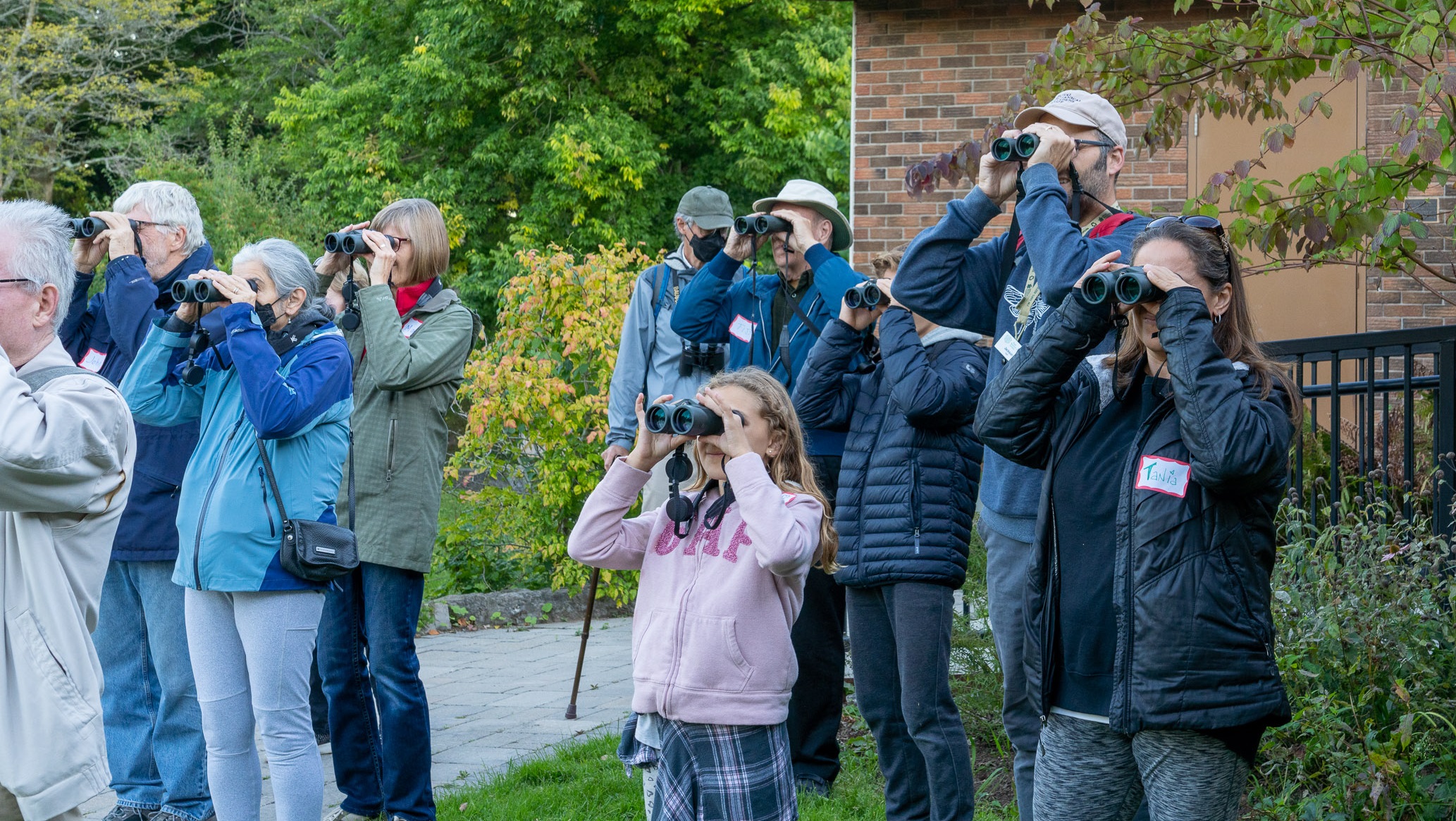| Membership | Price (+HST) |
|---|---|
| Single | $85/year |
| Single Plus | $120/year |
| Family | $130/year |
| Family Plus | $175/year |
| Contributing | $300/year |
| Supporting | $600/year |
| Sustaining | $1,000/year |
| Benefactor's Circle | $2,500/year |
| Director's Circle | $5,000/year |
| President's Circle | $10,000/year |
Behind the Scenes Migratory Bird Tour
By Theresa Camastra, Development Coordinator, Royal Botanical Gardens
This fall RBG hosted behind-the-scenes tours for Supporting level charitable members, featuring migratory birds. The tours were held during the magical hour when migratory birds come in to rest for the evening, and when crepuscular animals are most active. They were co-hosted by Jackson Hudecki, Special Programs Coordinator and Tys Theijsmeijer, Head of Natural Lands here at RBG.

Fall can be a great time of year for bird watching as the migrating birds are overlapping with birds that winter over, as we saw Dark-eyed Juncos (which are a type of sparrow) and warblers feeding on goldenrod at the same time. Goldenrods, not only contain seeds, but they are full of insects enjoyed by many migratory birds this time of year. Flocks of species migrating together sometimes are easier to see when in large groups, and sometimes birders are treated to seeing species that have been blown off course and are outside their normal migratory route.
One of the challenges will fall birding though, is that birds are not as vocal, as they are not calling to attract a mate. Jackson taught us the importance of being still and using our ears to locate and identify birds. Some of us heard a Marsh Wren singing nearby, but the only evidence was blades of grass rustling and moving. For those of us who wouldn’t be able to recognize a marsh wren singing, don’t worry there is an app for that! Jackson suggested the Merlin Bird ID app. It listens to bird sounds around you and provides real time identification suggestions. Its free and easy to use on your mobile device.
Our tour guides led us down to Cootes Paradise Marsh, where we saw White Egrets perched gregariously for the night. Jackson pointed out gulls hawking (flying low catching insects in flight) over the surface of the water. In the failing light Jackson would point out Green-winged Teals, and inevitably would be asked how he could identify such a small waterfowl at this time of day. He explained he can tell predominantly by their size as they are about half the size of mallards.
We stopped to overlook Hickory Island, one of three islands in Cootes Paradise to observe the various birds on the water. When the water is low like it is now, it is a great time to see shore birds like yellow-legged sandpipers as they love to poke their beaks in the mud for insects. Tys explained the water level is about 8 inches lower than ‘normal’ for this time of year. Tys also explained migration patterns; that out of four major North American flight patterns, two fly over the Great Lakes. Here at Cootes Paradise we benefit from providing a good resting area for migrating birds crossing the Great Lakes with shelter from the winds by the escarpment and plentiful food resources within a big river mouth marsh.
Fun Facts
- the Ruby-crowned Kinglet is nicknamed the popcorn bird as it is so small and ‘pops’ about eluding everyone, and the Yellow-rumped Warbler is nicknamed “butter butt” due to its yellow rump
- Double-crested Cormorants need to dry their wings, their feathers are not waterproof, which is why you often see them with wings outstretched somewhere high, trying to dry their feathers
- birds will fly towards a hill/cliff to catch more lift as warm air rises up-and-over the hillside
- we have Southern flying squirrels right here at RBG, but unlike the eastern grey squirrel, these little rodents are strictly nocturnal
- the Weeping Willow down by the boat house is covered in gnarly bumps, called crown gall caused by absorbing toxins in the soil. (photo)
- the clicking sound we hear this time of year; often mistaken to be crickets or tree frogs, is the workings of a katydid called the Greater Anglewing
Thank you to Tys and Jackson for sharing their combined knowledge of birds and nature in a fun and entertaining way. The next behind-the-scenes tour will be in the spring of 2023.
More from the RBG Blog
Check out RBG’s blog for announcements, articles, and more from Canada’s largest botanical garden.
Want to be sure you hear first? Sign up for our weekly e-newsletter to hear about upcoming events, weekend activities, articles, and more!













